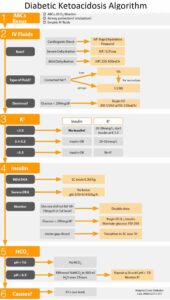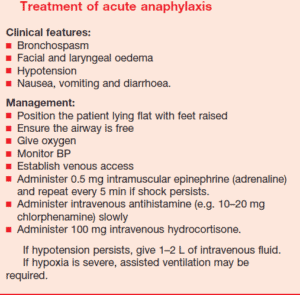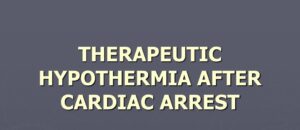Table of Contents
Extracorporeal membrane oxygenation (ECMO) is an increasingly popular technology that is used as a modified cardiopulmonary bypass in order to oxygenate blood externally. First demonstrated in the 1970s, it has recently gained popularity as a rescue therapy for patients in severe respiratory failure, circulatory failure, and prolonged cardiac arrest. While multiple studies have established ECMO as an effective rescue intervention in pediatric populations with cardiopulmonary failure, large RCTs have yet to establish the same utility in adults, and its clinical effectiveness is still uncertain. Advancements in ECMO technology and widespread use during the 2009 to 2010 H1N1 outbreak have led to a rise in use.
There are two basic configurations for ECMO: venovenous (VV) and venoarterial (VA). VV ECMO accesses and returns blood from the venous system and provides nonpulmonary gas exchange, and thus is most commonly used for gas exchange and respiratory support. VA ECMO accesses the venous system and returns to the arterial system and is used for circulatory support in prolonged cardiac arrest and cardiac failure. Extracorporeal cardiopulmonary resuscitation (ECPR) utilizes VA ECMO as a method to provide gas exchange and circulatory support. When conventional algorithms fail, ECMO may represent a rescue therapy for patients in extremis.
Proposed Physiology
ECMO offers the possibility of supporting patients with nonsurvivable heart and lung pathology when conventional maneuvers are failing and allowing increased time to treat underlying illness. Utilizing ECMO allows gas exchange despite lack of native lung function, potentially allowing further lung-protective ventilation strategies to be used. In patients with refractory cardiac failure, VA ECMO provides oxygenated blood to the arterial system in a nonpulsatile fashion, supplementing cardiac output.
Basic Configuration
The configuration of ECMO is highly variable, and several pump-drive and pumpless systems exist. Essentially, the basic configuration consists of specialized cannula, circuit tubing, a centrifugal pump, heat exchanger, bladder reservoir, and a membrane that oxygenates blood and removes carbon dioxide. The tubing runs to and from the patient, and blood is driven through the oxygenation membrane by the centrifugal pump head, warmed to an appropriate degree, and returned to the patient. This is done under systemic anticoagulation, in which unfractionated heparin is most commonly used.
Basic Technique
VV ECMO may be performed in a variety of ways. Typically, large cannulas are used and inserted via the Seldinger technique; deoxygenated blood is removed by accessing the femoral vein and advancing the cannula to the inferior vena cava. Return access is gained through the right internal jugular, thus returning oxygenated blood to the right heart. VA ECMO is typically performed at the femoral sites bilaterally. A venous catheter is inserted into the femoral vein, and an arterial catheter is inserted into the contralateral femoral artery. Care must be taken to avoid limb ischemia, as the arterial access site can potentially occlude the entire femoral artery. Initial cardiac output targets of 1.5 to 2.0 L/min are appropriate with titration to 3.0 to 6.0 L/min. Initiation of ECMO by ED physicians with meaningful long-term patient survival has not been demonstrated, though there have been case series demonstrating the feasibility of emergency physicians starting ED ECPR with promising results.
Indications
- Toxic overdose – While the literature in treating overdoses with VA ECMO is still growing, there are case series demonstrating its usefulness in mostly cardiovascular medications—most specifically calcium blockers and beta-blockers. In these cases, VA ECMO began early (<1 hour), and typical duration of therapy was <1 week.
- Hypercarbic respiratory failure – VV ECMO in this setting allows the removal of carbon dioxide while also allowing lung-protective ventilation strategies. Patients who stand to gain the most from this are those with acute respiratory distress syndrome (ARDS) by resolving hypercarbia, decreasing the acidosis, and reducing the complication of barotrauma.
- Cardiogenic shock – Loss of mechanical pump function will inevitably cause multiorgan dysfunction, and in situations where vasopressor and ionotropic support are inadequate, VA ECMO remains a viable rescue therapy. The goal of VA ECMO in this case is to augment cardiac output and reduce the dependence of vasopressive medications.
- Pulmonary embolism – VV ECMO allows for patients with pulmonary embolism (PE) with hemodynamic compromise a bridge to thrombolysis and catheter-based interventions.
- Prolonged cardiac arrest – The goal of using VA ECMO in a patient with prolonged cardiac arrest is to restore circulation. Like most ECMO topics, evidence for the utility of ECMO in cardiac arrest is still growing; however, early observation trials are promising. Most notably, ECMO has the most effectiveness when performed in patients with an etiology that is likely reversible. Keep in mind however that AHA Guidelines for CPR indicate that there is inadequate support to recommend the routine use of ECMO.
Risks
There are a fair amount of risks that are inherent to ECMO. Risks include artery occlusion leading to limb ischemia, hemorrhage secondary to anticoagulation, thrombosis and embolization from the centrifugal pump, and air embolism if the tubing is not primed appropriately. Another caveat is that ECMO should not be expected to continue indefinitely, and with that in mind, candidates for ECMO should be selected very carefully. Suggested exclusion criteria for initiation of ECMO include history of severe neurologic dysfunction, intracranial hemorrhage, terminal malignancy, uncontrolled bleeding, and severe peripheral vascular disease.
Key Points
- ECMO can be used as rescue therapy for cardiopulmonary support.
- At this time, there have been very few studies proving the efficacy of ECMO, especially in the setting of prolonged, out of hospital arrest.
- The basic types of ECMO are venovenous (VV) and venoarterial (VA). Both have different benefits and indications, but are similar in setup: cannula for vascular access, and then tubing, pump, membrane oxygenator, and warmer.
- Potential considerations for ECMO: hypercarbic respiratory failure, cardiac failure, refractory reversible cardiac arrest, and PE with hemodynamic compromise.
- Risks of ECMO are varied and include air embolism, limb ischemia, thrombosis, and hemorrhage after anticoagulation.



